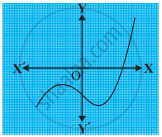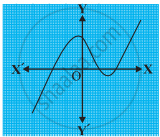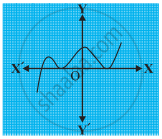Advertisements
Advertisements
प्रश्न
The number of quadratic polynomials having zeroes –5 and –3 is ______.
पर्याय
1
2
3
more than 3
उत्तर
The number of quadratic polynomials having zeroes –5 and –3 is more than 3.
Explanation:
Let the zeroes of the polynomial be α and β
then, α = –5 and β = –3
The general form of the polynomial with zeroes α and β is given by:
k[x2 – (α + β)x + αβ], where k is any real number
= k[x2 – (–5 – 3)x + (–5)(–3)]
= k[x2 + 8x + 15]
Hence, more than 3 polynomials can have zeroes the –3 and –5.
संबंधित प्रश्न
The graphs of y = p(x) are given in following figure, for some polynomials p(x). Find the number of zeroes of p(x).

The graphs of y = p(x) are given in following figure, for some polynomials p(x). Find the number of zeroes of p(x).

The graphs of y = p(x) are given in following figure, for some polynomials p(x). Find the number of zeroes of p(x).

One zero of the polynomial `3x^3+16x^2 +15x-18 is 2/3` . Find the other zeros of the polynomial.
Find all the zeroes of `(2x^4 – 3x^3 – 5x2 + 9x – 3)`, it is being given that two of its zeroes are `sqrt3 and –sqrt3`.
Write the zeros of the polynomial `f(x) = x^2 – x – 6`.
If ∝ and β are the zeros of the polynomial f(x) = `6x^2 + x - 2 `find the value of `(∝/β+∝/β) `
If one of the zeroes of the cubic polynomial x3 + ax2 + bx + c is -1, then the product of the
other two zeroes is ______.
The number of polynomials having zeroes as -2 and 5 is ______.
If α and β are the zeroes of the polynomial x2 + x − 2, then find the value of `alpha/beta+beta/alpha`
